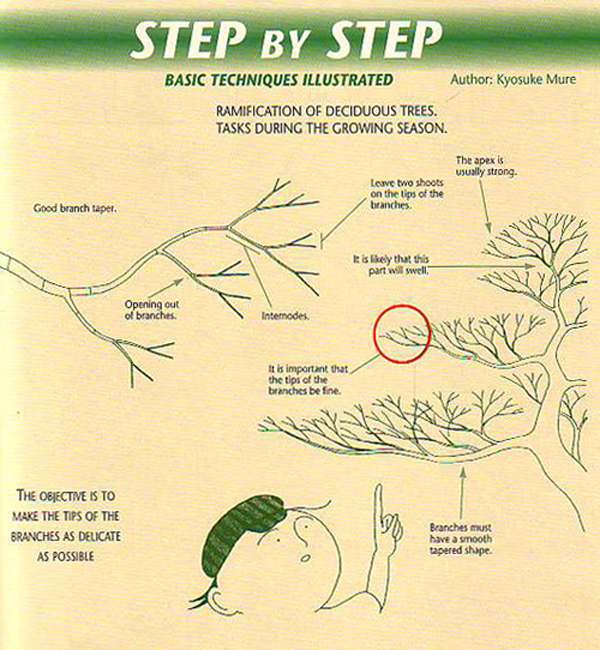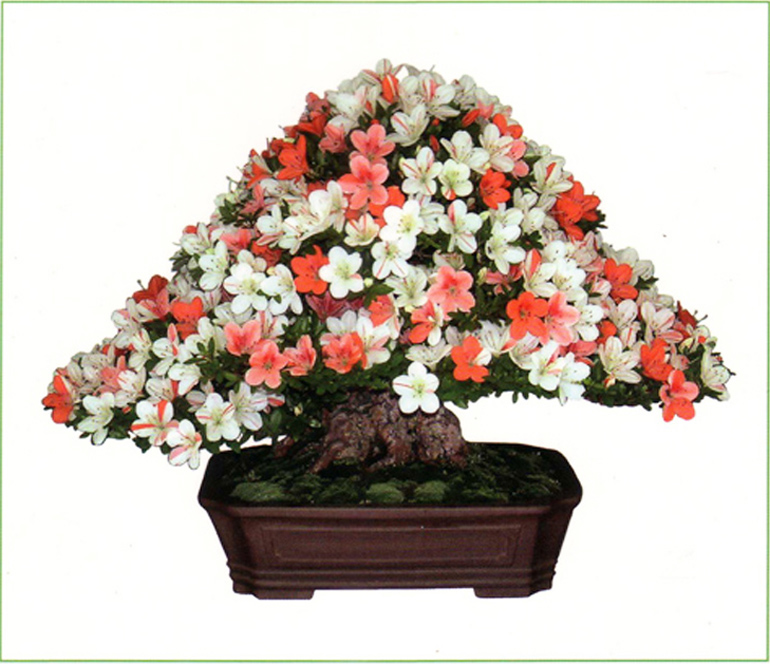This magnificent Japanese beech (Fagus crenata) received the coveted Kokufu prize at the 88th Kokufu Bonsai Exhibition (the oldest and most prestigious bonsai exhibition in the world). Aside from its unique power and beauty, this tree provides a perfect example of what great ramification looks like (made even more obvious by the bright rusty-red leaf buds). The photo is from the World Bonsai Friendship Federation. Identification and other details were provided by Bill Valavanis.
Yesterday we discussed ramification so we’ll keep going with this post that we last featured in January, 2015.
30% to 50% off Book Special Ends Soon
see below
–

This illustration (originally from Bonsai Today magazine) is one of many that we featured in a three part series of posts from 2010 (links provided below). The following text is from the first post in the series...
Ramification literally means branch development, or how branches grow. However, when it comes to the art of bonsai, it has come to mean branch development that displays a couple key features: taper and fine tips. These related features are critical when it comes to developing quality deciduous (and other) bonsai.
Deciduous trees develop rapidly, but they also lose their shape rapidly. With precise pruning and pinching, you can create excellent fine branching in just a few years. But it’s an on going process that requires continued pruning and pinching to maintain… (there’s more here, here and here).
 Ramification is not just about deciduous trees. A lot of skilled pinching and pruning is behind this Satsuki azalea’s wild profusion of flowers. The photo, which we featured in another 2010 post on ramification, is from Robert Callaham’s benchmark Satsuki Bonsai book (out of print).
Ramification is not just about deciduous trees. A lot of skilled pinching and pruning is behind this Satsuki azalea’s wild profusion of flowers. The photo, which we featured in another 2010 post on ramification, is from Robert Callaham’s benchmark Satsuki Bonsai book (out of print).
BIG BONSAI BOOK SALE
ends Tuesday, April 3rd at 11:59pm EDT
